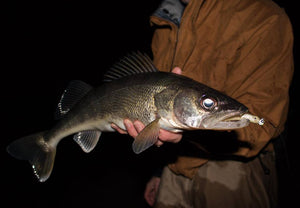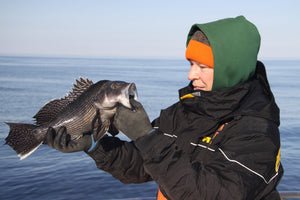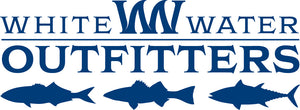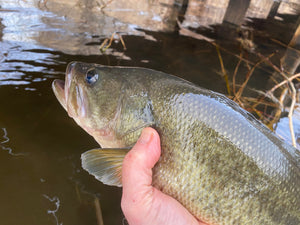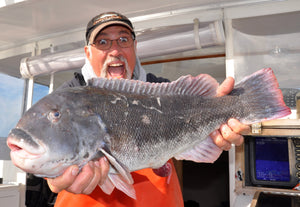Jig Gently for Late Season Bigmouths and Bronzebacks

There’s no doubt successful cold-water fishing for freshwater bass varies markedly from the summer routine. With water temperatures across our region in late fall through early spring trending anywhere from 50 degrees to just above the freezing mark, the metabolism of cold-blooded predators slows down substantially and, in general, so does the bite. If you want to continue to battle bigmouths and bronzebacks under such conditions, you'll need to try some different tricks. One that works exceptionally well is jigging small soft-plastics with ultralight tackle.
The catch here is that this winter technique generally works best in deeper waters. That means you'll need to focus your efforts with this technique on some of Long Island’s larger and deeper lakes like Lake Ronkonkoma, Fort Pond and Laurel Lake. All three of these locations feature plenty of water in the eight- to 12-foot range, which is ideal for experimenting and refining this approach.

Get off the shore and work 8- to 12’ depths using light gear and featherweight jigs to connect with more cold-water bass. OutdoorTom.com photo.
Downsize For Success
With you quarry having a slow metabolism at this time of year, and the water being gin-clear since most of the zooplankton has died off, this is a good time to think small. Many freshwater anglers are familiar with summertime jigging using heavy-headed, big-skirted jigs to punch through the weeds. Think of light tackle, cold water jigging as being the polar opposite.
A lightweight spinning combo, like St. Croix’s X-Trek CTCS66MLF2-C loaded with four-pound test fluorocarbon line is what you’ll need to scale things down appropriately. This is a two-piece outfit that can also double as a travel rod and reel for trout fishing. For lures, consider a 2.8” Keitech FAT Swing Impact paddle-tail swimbait impaled on a 1/8-oz. jig head, a Leland’s Lures Trout Magnet in white, or a small black, purple or dull green home-tied hair jig weighing 1/32- to 1/8-oz. as along the lines of what you’ll want to offer. For the hair jigs, you might also slice a sliver of from a Fat Cow Jig Strip to add to the hook as it will slightly slow your lure’s sink rate and add a little more bulk to keep the focus more on bass than perch and panfish.
Additional solid choices include a 3/16-oz. football jig with two-inch soft plastic paddle tail, and 3” Mann's Sting Ray Sassy Grubs. With any of these lures you are likely to score some bluegill, pumpkinseed, crappie and perch as well, all of which will give a fun account of themselves on lightweight gear.

Rather than beat the shoreline brush, winter bassing puts the focus on deeper, more open water. Pick your days carefully and keep your offerings tight to the bottom and work them slowly for the most success. It’s also smart to fish in the late afternoon after the water has had a chance to warm to its highest temperature of the day. OutdoorTom.com photo.
As a rule, think neutral colors for cold water jigging. Olive and black work well, as do various shades of brown from time to time, especially on lakes known to have crayfish. Combos of black and blue, bluegill patterns, and bright white (although far from neutral) rank the top patterns. The combination of lightweight lures with slow sink rates and ultralight spinning rods with fluorocarbon line allows for a super-natural presentation. Use the lightest jigs on calm days or in shallower water, the heavier ones when the wind starts blowing or you move out into double-digit water depths.
Crawl Slowly, Lift Softly
As a rule, cold water bass tend to strike softly. Crawl or walk your lure s-l-o-w-l-y across the bottom, feeling for every little rock, pebble or piece of small structure. You'll want to bump whatever you feel on the lakebed and then lift the jig softly just an inch or two. Most times, you’ll feel a little “tick” or added weight as a fish picks up the lure instead of a solid strike or tug. If the line simply feels a bit heavy, it’s time to tighten up and set the hook.

Working the deeper edge of a slope is a great way to connect with late fall and winter bass. OutdoorTom.com photo.
Initially, you’ll probably miss a few strikes with these small lures and gentle presentations simply because the pick-ups are difficult to recognize. Often, the line feels like it has garnered a little bit of weed – which is unlikely at this time of the year since most weed beds have long since faded. If anything feels different than normal, go ahead and swing away.
- Bryce Poyer


